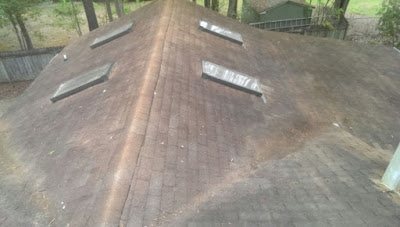For us, the logistics weren't difficult to fulfill because we had a very helpful mortgage underwriter who was incredibly patient with our late night calls and last minute emails. We also had a realtor who was more than happy to help us navigate the inspection trenches. We had been pre-approved for a mortgage that was 2 times the cost of the house we were purchasing so we knew that there would be no re-negotiation of mortgage terms or conditions (more on financing a Fixer Upper in another post). What we didn't expect was the mortgage approval for THIS specific house. Apparently, the complications with buying a fixer upper are enormous.
When you purchase a house, your mortgage company will send someone out to appraise the house. That means that they will take an inventory of the house's assets and compare the house to other houses of similar age and location. In our case, the complication was that our house was going to be compared to other 1970's houses of "similar condition and location". In our area, that meant dilapidated, small, often terrible condition homes.
You see, we were lucky to find such a large fixer upper in such great condition. It's not typical in our area for fixer uppers to not be mold infested (we live in a hot coastal community), or otherwise highly damaged (floor rot, foundation problems, roof issues, etc). Our 1975 home has 2200 square feet (compared to a typical 1500 square feet for homes of similar age in our neighborhood) and was for-the-most-part well taken care of by it's previous owner until he was too elderly and sickly to maintain it. The previous owner had hand built the added 700 square foot Kitchen and Carolina Room addition. He had also converted the garage into a closed-in climate controlled room in the house. These two things are highly sought after in a fixer upper and often are the first homes snatched up when they come up for auction.
But other houses in our market had not been so lucky. If the appraiser valued the house BELOW our agreed purchase price we would loose the house. Sure, we could then renegotiate the price (adding potentially another month to the already lengthy process) or we could put more money down out of pocket to cover the difference (money that we had intended to use to renovate the house), but in this highly competitive fixer upper market and any delay could have meant loosing the house to someone who could pay cash. So, we did what any self-preserving Fixer Upper enthusiast would have done: we fixed some of the house before the appraiser came.
 |
| AFTER: the roof was in great condition after being cleared. This is definitely an asset our appraiser would look kindly on. |
 |
| Previous roof leaks (that had been repaired) were never repainted (which could be a "red flag" for the appraiser) and stained needed to be removed (another "red flag" for potential floor damage) |
 |
| We increased the aesthetic appeal (because first impressions are essential for home value) by pressure washing, raking rocks, and covering exposed landscape tarps. |
We waited on pins and needles that day. Knowing that it would be cutting it close. Our work paid off. The houses added square footage, mostly-new roof, and the work that we'd put into the house increased the value to roughly $20,000 more than our purchase price. The appraiser gave us a list of as-is comparables that were all valued less than our home and knowing that our home was a fixer upper, he also gave us a list of post-renovation comparables so that we could see what our home's potential was (comparables post-renovation were valued $50-$70K more than our home, with the highest valued home in the neighborhood being sold a few years prior on our street). This was great news. It meant our Fixer Upper was worth it. Worth the hours. Worth the extra stress. Worth the investment.
 |
| My husband and I on closing day. |
We went into our closing day knowing that our house was soon going to be our home. A home we could pour our sweat and tears into to make it our own. A home our children could grow up in, helping and learning right along side us. We knew that this house was going to be a great adventure.
Do you have a house closing story you'd like to share? Did you face complications in your house closing, inspection, or appraisal? Share your comments below.



No comments:
Post a Comment